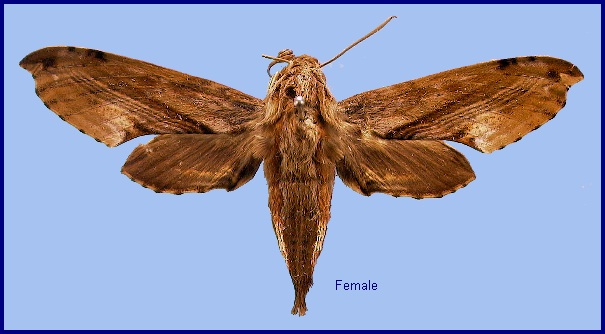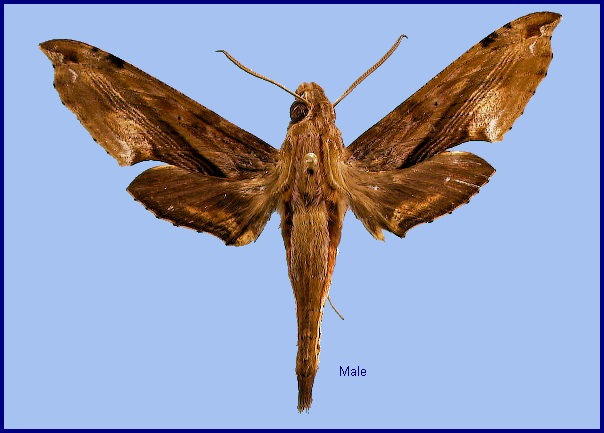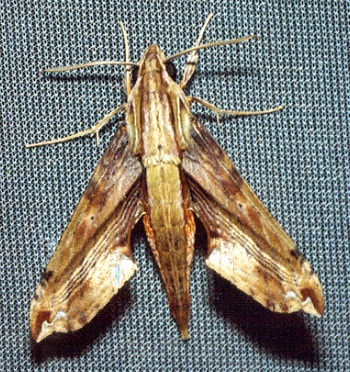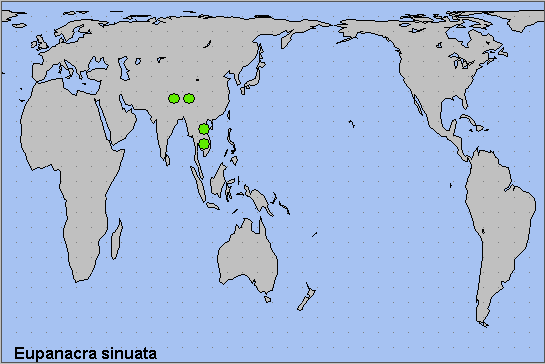

Panacra sinuata Rothschild & Jordan, 1903, Novit. zool. 9 (suppl.): 539. Type locality: [India,] Sikkim.
Synonym. Panacra sinuata Rothschild & Jordan, 1903.
Wingspan: 58--68mm. Forewing and hindwing outer margins slightly scalloped. Forewing sinuate posterior to apex. Forewing upperside with five postmedian lines, first and second postmedian lines fused into a band ending at a spot on the costa, third, fourth and fifth postmedian lines narrow but well-marked, nearly straight as far as Rs4 before becoming faint and curving to the costa; fringe prominently dotted with blackish brown. Forewing underside with basal two-thirds drab brown; first postmedian line broad, ending at a small patch on the costa; a large brown submarginal patch extends proximad along M2 to the first postmedian line; a conspicuous blackish brown spot near tornus posterior to Cu2. Hindwing upperside with pale median band narrow, often just a line that does not reach costad of M3, not broader than the brown marginal band. Hindwing underside mostly drab brown; costal margin, inner margin and narrow submarginal band ochre speckled with brown; three distinct, somewhat dentate postmedian lines present, the first the heaviest. Middle of thorax upperside and proximal abdominal tergites of similar pale colour to Eupanacra variolosa, a blackish brown stripe underneath the tegula continuing onto abdomen.
In the male genitalia, uncus and gnathos similar to those of Eupanacra automedon. Valve strongly convex dorsally in distal half, with 4 or 5 large, asymmetrical, obliquely rounded-truncate stridulatory scales. Harpe ending in a stout process that is spatulate in dorsal view. Phallus with right lobe of apical process similar to Eupanacra automedon but narrower and less truncate; left lobe also broad, much more proximal, apex obliquely rounded, heavily dentate.


Unknown.
China: 13.v (Chongqing); 8.vi (Yunnan, Xishuangbanna); 14-27.vi (Yunnan).
OVUM: Unknown.
LARVA: Unknown.
PUPA: Unknown.
Larval hostplants. Unknown.
Unknown.
China: Chongqing (Simian Mountain National Scenic Resort, 1060m); Yunnan (nr. Yingjiang, Tongbinguan, 1180m; Pingbian Co., Dawei Shan Nature Reserve, 2000m; Meng Hai, Xishuangbanna (Jiang You, iNaturalist 2024)).
Nepal, Bhutan (Norbu et al., 2022), northeastern India (Arunachal Pradesh, Himachal Pradesh, Assam, Sikkim, Manipur, Meghalaya, Uttarakhand, West Bengal), southwestern China, northern Thailand, Laos, Vietnam (Le & Vu, 2024) south to Malaysia.

 Return to Sphingidae of the Eastern Palaearctic species list
Return to Sphingidae of the Eastern Palaearctic species list